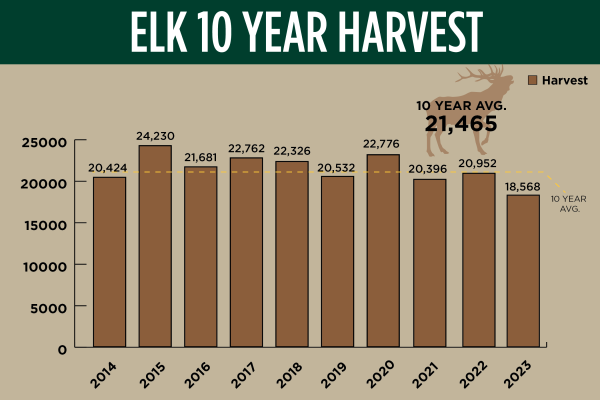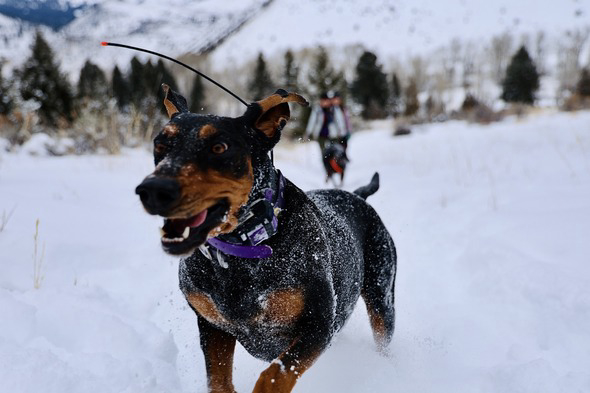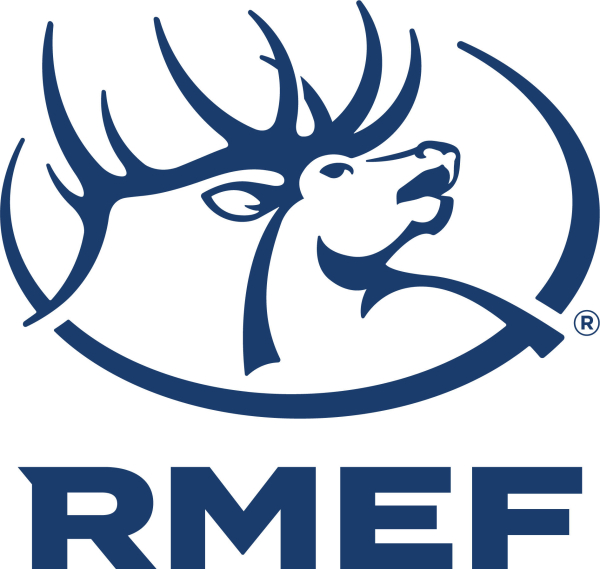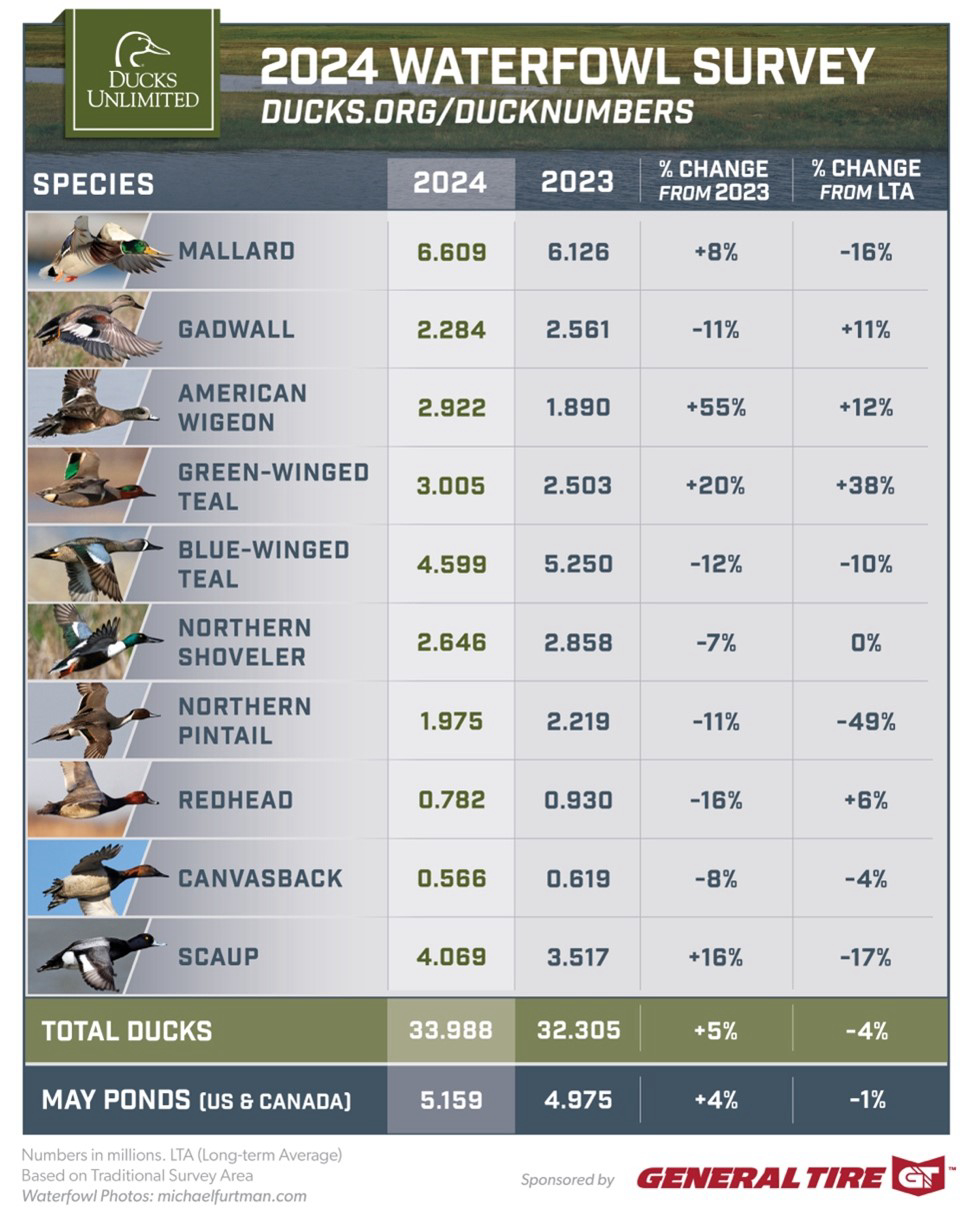Michigan’s Canada goose success story
It’s no secret that Michigan offers some of the best Canada goose hunting anywhere in the world. But many waterfowl hunters, whose perspective only covers the last 30 years or so, might have a hard  time believing it wasn’t always that way. Michigan’s resident Canada goose population – which produces the lion’s share of the annual harvest – was virtually nonexistent a century ago and not especially noteworthy five decades later.
time believing it wasn’t always that way. Michigan’s resident Canada goose population – which produces the lion’s share of the annual harvest – was virtually nonexistent a century ago and not especially noteworthy five decades later.
“Back in the ’50s, it was a rare thing to see a Canada goose in this state,” said Barbara Avers, the waterfowl specialist with the Michigan Department of Natural Resources. “It was rare for hunters to kill a goose. It was a pretty big deal.
“The restoration program has been exceptionally successful.”
Historically, the Lower Peninsula was part of the giant Canada goose population’s breeding range. But gradually, due to a variety of factors, the geese disappeared.
“They had become rare by 1912,” said Dave Luukkonen , a DNR wildlife research biologist who has studied the birds for most of his career. “At one time, the giant Canada goose was thought to be extinct.”
While migrant geese – the Mississippi Valley population, which migrates across the west side of the Lower Peninsula, and the South James Bay population, which follows the Lake Huron coast – came through in the fall and spring, the rest of the year there were no geese in Michigan.
By 1920, however, waterfowl enthusiasts had located a small population of giant Canada geese in Rochester, Minnesota. There were also a few private “decoy” flocks of giant Canada geese around the  country that preserved the subspecies. A couple of Michigan’s private citizens – W. K. Kellogg of Battle Creek and H. M. Wallace of Howell – obtained some birds and began raising them.
country that preserved the subspecies. A couple of Michigan’s private citizens – W. K. Kellogg of Battle Creek and H. M. Wallace of Howell – obtained some birds and began raising them.
“Wallace supplied the state with birds,” said Luukkonen.
The Michigan Department of Conservation – now the DNR – raised geese at the Mason State Game Farm.
“Between 1928 and 1964, they released 2,500 geese on 30 sites,” Luukkonen said. “That resulted in 14 breeding areas by 1969 with an estimated population of 9,400 birds.”
“By the 1970s, geese were abundant enough that they were being transported to numerous places,” Luukkonen said. “That whole translocation evolved from a restoration to a conflict resolution. There are still birds that are being translocated. The effort is to take birds from areas where they are unlikely to be harvested, to areas where they are likely to be harvested.”
By 1982, the local population was so strong that the U.S. Fish and Wildlife Service, which had been protective of the migrating populations, allowed Michigan to establish an experimental late hunting season to take advantage of the resident population after the migrants had moved through. It was the first step in what has become Michigan’s more than five-month-long goose season.
 Michigan was the first state in the union to have a special season for local birds. That first late season was Dec. 22 to Feb. 16. The next year the DNR moved the opener to Jan. 1 and the late season has been very similar ever since.
Michigan was the first state in the union to have a special season for local birds. That first late season was Dec. 22 to Feb. 16. The next year the DNR moved the opener to Jan. 1 and the late season has been very similar ever since.
The giant Canada geese continued to prosper. By the late 1990s, when the population peaked, it was estimated in excess of 325,000 birds. The DNR adopted a management strategy to maintain the population between 175,000 and 225,000. In 1987, the Fish and Wildlife Service began allowing an additional early season to help control the population. That season opens Sept. 1 with a liberal daily bag limit.
During the first years of early season hunting, hunters were asked to bring body parts of harvested geese into DNR offices so they could be analyzed to see if they were locals or migrants. (The giants, which are larger than the migrants, could be distinguished by the measurements of their heads and bills.) The harvest was so overwhelmingly made up of local birds that the USFWS liberalized Michigan’s goose hunting season.
Michigan now is allowed 107 days of goose hunting, but the state is divided into three management zones so the seasons are different across the state.
“You’d have a hard time finding a day between Sept. 1 and Feb. 14 that you couldn’t hunt a goose somewhere in this state,” Avers said.
Last year, Michigan hunters shot an estimated 140,000 Canada geese. Of those, 75 percent were giant Canadas.
 “These days there are so many resident geese that it’s hard to tell when the migrants are coming through,” said southeastern Michigan DNR biologist Joe Robison.
“These days there are so many resident geese that it’s hard to tell when the migrants are coming through,” said southeastern Michigan DNR biologist Joe Robison.
Avers says she hears complaints about geese from some people – typically lakeside residents and farmers – that the Canada goose reintroduction “has been too successful.” Fact is, the USFWS allows the state to develop programs to resolve human/goose conflicts. The program allows some nest destruction as well as relocation of geese.
The DNR no longer traps geese for relocation, but allows private contractors, who are trained and permitted to do so. The birds are corralled during their flightless period in spring and transported, mostly to state game or wildlife areas, “because we don’t want to create a nuisance somewhere else,” Avers said. “A lot of times they go back to where they hatched within a few weeks, but at least the landowners get a break for some period of time.”
You won’t hear complaints about too many geese form hunters, however. Last year goose hunters took home an average of four birds apiece.
“We’ve got geese in good abundance across the state,” Avers concluded.
Learn more about goose and other waterfowl hunting opportunities in Michigan on the DNR website www.michigan.gov/hunting






